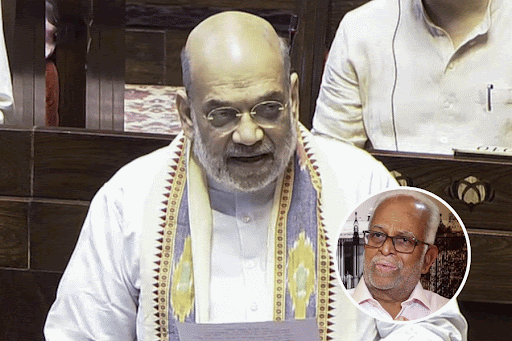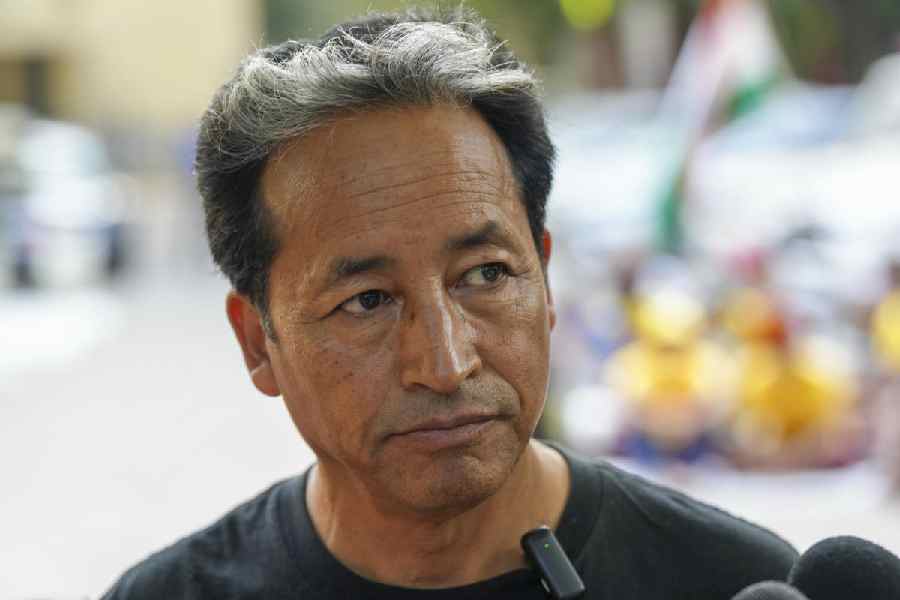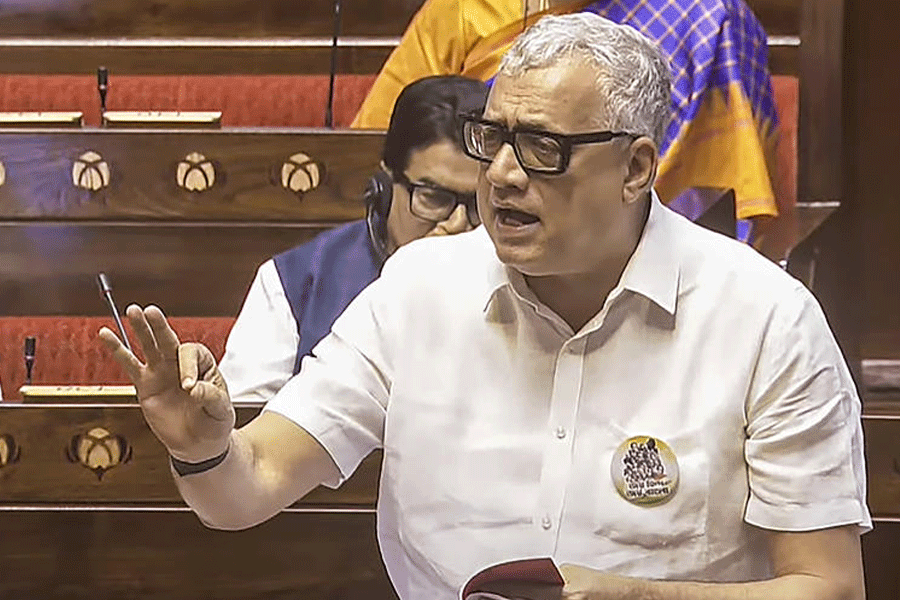 |
 |
 |
| (From top) Kiran Segal’s dance troupe in action during the composition, Agni — the Fire Within; Segal; Navtej Johar strikes a pose |
It might seem like an unusual combination. But dancer Yamini Reddy figured that George Harrison’s soulful ballad My Sweet Lord would be just the right accompaniment for her Kuchipudi performance. Abandoning the music that has been used for Kuchipudi since time immemorial and improvising movements to match, Reddy went ahead courageously. “I was apprehensive when I conceived the choreography but audiences loved it. They had never seen anything like this,” she says.
For Daksha Seth it was a highly publicised moment of triumph. At the recent Commonwealth Games in Melbourne, Seth and her team of 12 dancers ? which includes her daughter Isha Sharvani ? stole the show with their breath-taking performance called Circus of Earth and Sky. Seth and her dancers blended the music composed by Seth’s Australian husband, Davissaro with gymnastic movements that also had shades of traditional Indian dance.
Indian dancers always moved in lock-step with tradition. But now they are breaking away and playing to audiences eager for a modern twist to old forms ? or even a break with the past. Says Seth, who’s probably India’s foremost proponent of modern dance, “Audiences are hungry to see something new, innovative and creative.”
Take a look at Navtej Johar, who trained originally in Bharatnatyam, and who is constantly extending the boundaries during his performances. Johar also trained in Patanjali Yoga and says that his theatre background encouraged him to experiment with traditional forms. “All my work is a combination. I borrow elements from yoga and Bharatnatyam,” he says.
Seth and Johar are, of course, famed for their path-breaking performances. But even traditional dancers like Kathak exponent Uma Sharma are stepping forward and trying something different. This October, she’s taking part in a performance where she will be dancing to the tunes played by a troupe of Greek musicians. Sharma, who reckons that about 30 per cent of her work is now fusion-based, says the dance will be ‘pure Kathak’ but the music and theme will be Greek.
Similarly, veteran Kathak performer Shovana Narayan is now mixing the Indian dance form with Western ones like flamenco and ballet. More cautiously, traditionalists like Sonal Mansingh are also experimenting but in a different way. Mansingh has, in fact, used both Odissi and Bharatnatyam when she was choreographing a performance.
What’s pushing these dancers down new paths? One answer is that audiences seem eager to try something new. Johar calls it the “dictates of our times”. He adds that, unlike in the past, audiences seem more keen on group performances and less on solo shows. “The demand is definitely leaning towards more group shows,” he says.
Seth too says that during her ‘peak years’ she would do about three or four solo performances a month, but last year she only did one in Paris. “Now, I get to do one solo show in three to four years, that too outside India,” she says.
 |
 |
 |
 |
| (From top) Daksha Seth showcasing her craft; Seth; Isha Sharwani, principal dancer of Seth’s troupe; Sharwani during an experimental performance |
Others give different reasons for shifting tracks. Narayan says that perspectives change when you’ve been dancing for many years. “The deeper you sink into your dance form, your roots are deeper. You are able to appreciate other forms and more,” she says.
In fact, Narayan began small experiments quite a long time ago. Many years ago, she was inspired after watching a flamenco performance and then delved deeper and read up on the form. Soon afterwards she took part in a performance with a ballet dancer in Vienna and then another with a flamenco specialist. Flamenco is a lively dance form that originated in southern Spain.
“The treatment of hands and arms in ballet reminds me of Kathak,” says Narayan who bravely decided to break free of the mould and choreographed a show that incorporated all the three forms of dance. Kathak, according to Narayan, stands between flamenco and ballet. “The footwork of flamenco is similar to Kathak. The difference in Kathak, according to Narayan is that the form depends heavily on facial expressions.
But Narayan insists that some things are sacrosanct and she doesn’t deviate from the original Kathak steps. Last year, for instance, she did a performance with Buddhist monks where she danced to the chants of the monks. “It was inspiring and I could feel the vibration. At the same time, it was spiritual in a way,” she says.
Sharma too blended Kathak with flamenco after a trip to Spain. Then during a trip abroad, she redefined Kathak by dancing alongside a troupe of Turkish dancers. “While I did Kathak they did their footwork wearing their usual black attire,” says Sharma, who is a disciple of the late Shambhu Maharaj. Another time she was so inspired by a can-can performance in a five-star hotel that she jumped on stage and performed with them.
Inevitably, all these dancers tried their hands ? and feet ? at experimentation only after years of building up their careers. Seth learnt Kathak for 25 years before trying other forms of dance. Her fusion odyssey began one day when she saw a Chhau dancer teaching a classful of students. “I fell in love with the dance and in 10 minutes I was in the class,” says Seth. Learning Chhau, says Seth, “completely changed my perceptions about dance. It opened new horizons in my mind.”
This led her down an entirely new path. During a performance, Seth, after doing the usual round of Kathak suddenly changed step and performed Summer, a seven-minute dance composition that she practiced for four months. With 17th century Italian composer Antonio Vivaldi’s music in the background, Seth says she explored Kathak which formed the foundation of the dance. “It was a form of Kathak but not Kathak in the real sense,” she says. She says the audience loved it and huge numbers of people came backstage to congratulate her on her innovations.
Since then, she has borrowed from even more unusual disciplines. After watching people practice Mallakhamb, a rope exercise, which originates from the Akhada tradition of Maharashtra, she asked the teacher to instruct her. Later she travelled to small villages in Maharashtra trying to perfect her skills. Then, she went a step further and took a course in Kalaripattu, the incredibly complex and physically trying martial arts discipline in Kerala. “My dances emerged from that transformation,” says Seth who made Kerala her home when she was learning Kalaripattu.
Seth says the different forms of dance have helped her in different ways. For instance, the martial art encouraged her to try out more acrobatic movements and her dancers are frequently leaping about and making movements in mid-air. “I broke boundaries and the aerial work that I introduced never existed before. The dances that I do are above the ground,” she says.
Inspiration, say all these dancers, can come from anywhere. “I get inspired from all the elements that I have imbibed,” says Seth who adds, “I am inspired by visual forms like Thyam of Kerala and different ritual folk dances.” Johar says yoga is his key inspiration. “I am drawn by the movement and I use yoga steps extensively wherever it is relevant in my composition,” he says.
Segal, for instance, says she drew inspiration from violinist Dr L. Subramaniam’s Whispering Moods. “There came a point when I was listening to Dr Subramanium and gradually, I started imagining some movements and I was inspired.” Subramaniam’s music was, of course, very different from the music that is normally used in Odissi performances. Later, she did a fusion of drums where the sounds of manjira, tabla, mandala and bakhawas become one and in a clear departure from Odissi, the singing was Dhrupad. The performance had 15 dancers.
 |
 |
| Kathak exponents Uma Sharma (top) and Shovana Narayan are experimenting with Western dance forms and music |
More recently, Segal has even abandoned the traditional Odissi costume. In one performance Segal and her 13 dancers performed Agni ? the Fire Within, a contemporary composition in Canada. Here, dancers draped in black and red costumes and wearing veils, narrate a story through their movements and music.
At a slightly different level, Bharati Shivaji performed Swan Lake last September in Moscow. But Shivaji used Tchaikovsky’s music and choreographed the piece in typical Mohiniattam style. “It was as if the Russian composer had composed the music for me,” says Shivaji who said the highlight of this composition was the coming together of two great classical tradition: Indian and Russian. The dance had 24 dancers and her daughter, Vijaylaxmi, was the lead dancer.
What about the audiences? Says Narayan, “It’s a learning process even for the audience. They are curious to know where are the points of similarity and how the two forms gel.”
The fact is that no dancer will ever criticise traditional art forms. Even Seth, who is probably India’s high priestess of modern dance, says that today’s audiences want more drama on stage inspired by what they see on television. Nevertheless, she says that, “classical dance is a much more difficult work. One devotes ones whole life to specialise in a form.”
Mansingh feels while it is inevitable that new forms and ideas should come in the medium, one should be careful. “There are pros and cons,” she says cautiously. She believes that dancers must be extremely mature and have learnt their craft thoroughly before they try anything new. “It all depends on the maturity of the dancer. Unless you’ve explored the dance form and have tasted the dimension fully, you could ruin the dance,” she says
Mansingh says she has reservations about the popularity of modern dance and worries that people take up fusion for quick fame and money. “They mess up the dance and look silly,” she says.
It goes without saying that dancers must be highly skilled and experienced if they want to blend complex dance forms with one another. But in a world that’s constantly looking out for new experiences, it’s sure that fusion is set to become bigger.










